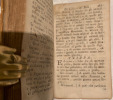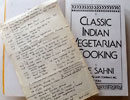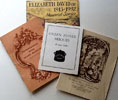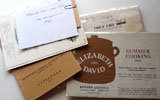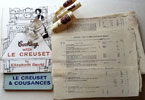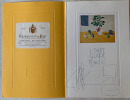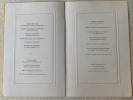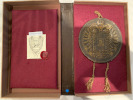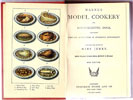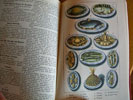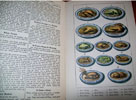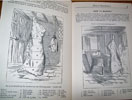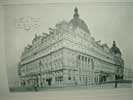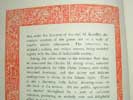Time and place in Nordic Cuisine.
Rene Redzepi. Photographs by Ditte Isager,
FIRST EDITION 2010. 4to. 295x255x40mm. Pastedown with book description. Fep with Repzepi’s signature. [1] Title page in yellow. 2 pages with Noma written across. [1] A large folding plate that is a illustrated map of the Nordic region with towns and places of importance to Noma. 1p Contents. (1)7-354. 3p Photographs of everyone at Noma. 5p Glossary. 6p Index. 1fep. Back paste-down with a small bio’ of Redzepi. With 200 fine photographs. Hard boards fully covered in grey printed cloth. As new.
- Placed unusually on the inside paste-down, there is a small concise description of the aims of Noma. It starts: "Noma: Time and place in Nordic Cuisine is an exclusive insight into the food philosophy and creativity of Chef Rene Redzepi and his innovative Copenhagen Restaurant, Noma. The book looks at every aspect of Noma and its cuisine. As well as including over 90 recipes, each of which have been specially photographed, it explains Redzepi’s evolution as a chef, describing his discovery of seasonal Nordic produce and how he has developed this into a well defined cuisine. It also portrays his relationships with some of Noma’s most dedicated suppliers, detailing the incredible commitment many have to producing and foraging ingredients of extraordinary high quality. The book provides a unique understanding of what Redzepi refers to as “The Perfect Storm”: the maelstrom of operating at the cutting edge of international gastronomy using only locally sourced ingredients. With 200 specially commissioned photographs by Ditte Isager showing the restaurant's dishes, ingredients and suppliers, and also the wild Nordic Landscape. The book is the showcase of its tenacious driving force, Rene Redzepi. He was born 16 December 1977. The co-owner of the two-Michelin starred Noma, situated in the Christianshavn neighborhood of Copenhagen, Denmark. It was voted the best restaurant in the world in 2010 San Pellegrino Awards and Restaurant magazine (incidentally proving 3 Michelin stars are not necessarily the pinnacle achievement to aim for). Redzepi is the son of an ethnic Albanian father, who migrated to Denmark from what was then Yugoslavia (now Republic of Macedonia) and a Danish mother. After choosing a culinary career at random, he trained at the restaurant ‘Pierre Andre’ which had just opened in Copenhagen and soon received a Michelin star. He first visited Ferran Adria’s ‘El Bulli’ as a guest in 1998 and has subsequently worked there during the 1999 season. Back in Copenhagen he started working at ‘Kong Hans Kælder’ that had been one of the city's leading gourmet restaurants since the mid 1970s. In 2001 he spent four months working with Thomas Keller in California at The French Laundry but returned to Kong Hans Kælder and Copenhagen. In December 2002, Redzepi was contacted by Claus Meyer, who had been offered to operate a restaurant at the North Atlantic House, a former 18th century warehouse that was being turned into a cultural centre for the North Atlantic region. Noma was opened in 2004 with Redzepi as the head chef. Interestingly the Noma brigade photographs at the back of the book have a total of 42 people. A huge number by any other restaurant’s staffing standards. With this book, Redzepi will become as well known and referenced as Adria and Blumenthal, the other two famous gastronomic de-constructors.



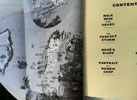
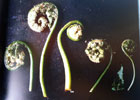
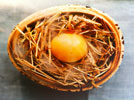
click on image to enlarge

Modern category
ref number:
11165 








